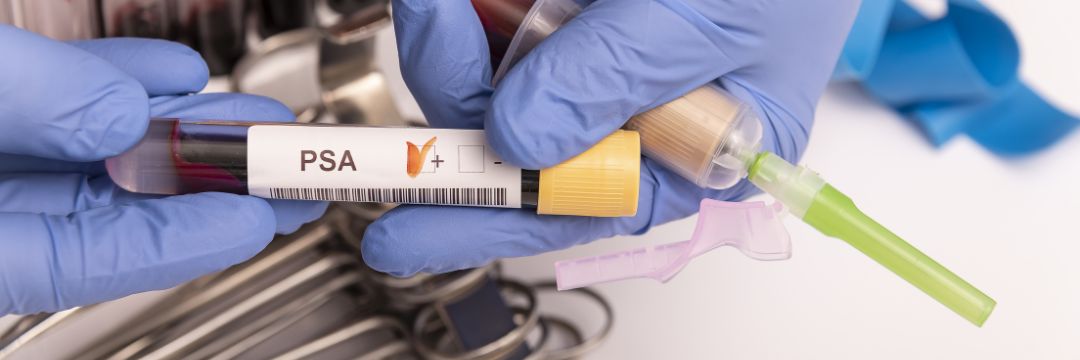Enlarged Prostate

Many men come to our office in full-blown panic because of lower urinary tract symptoms, or LUTS, thinking they may have prostate cancer. However, it is essential to understand that prostate cancer rarely presents with urinary tract symptoms. It is typically relatively silent until its later stages. Of course, on the one hand, this is a great relief for patients who are concerned about the potential for cancer. On the other hand, we often catch prostate cancer at more advanced stages if patients do not keep up with their screening protocols.
Let’s talk a little more about an enlarged prostate, also known as benign prostatic hyperplasia. BPH typically starts with a man noticing that they aren’t able to sleep through the night without going to the bathroom (they may also experience an urgency to go to the bathroom, feel like they haven’t fully emptied their bladder, or have a weak urine stream). These urinary issues are the hallmark of prostatic enlargement and affect about 50% of men over 50. By the age of 80, a full 80% of men will experience prostatic enlargement and lower urinary tract symptoms.
While the symptoms associated with BPH may be embarrassing, many treatment options are available when visiting your urologist or men’s health specialist. Of course, the most critical first step is to get a proper diagnosis and treatment plan. After consulting with their urologist, patients may opt for watchful waiting (if symptoms are mild), medication, in-office procedural options, or even surgery, depending on how problematic the symptoms are. No matter how severe, these symptoms do not increase the likelihood of malignancy. However, they are usually progressive, and untreated BPH eventually gets worse. It is worth noting that severe, untreated prostatic enlargement can eventually cause urinary retention, which is an urgent concern.
Prostate Cancer
On the other hand, to diagnose prostate cancer, we use the results of a screening test known as PSA to understand whether significant prostate cancer may be present. PSA stands for prostate-specific antigen, a marker in the blood that only the prostate secretes. At one time, we believed that a high PSA reading – more than 4.0 ng/dl – indicated prostate cancer needing treatment; however, there is a reasonable degree of nuance to using PSA before we eventually biopsy the prostate.
We could call it an art versus a science.
In other words, a single PSA reading is insufficient to make the call that a patient has prostate cancer and needs a biopsy. In fact, because of the misunderstanding of PSA as a diagnostic test, many men in the 1980s and 90s were overtreated for insignificant prostate cancer that would never have metastasized in their lifetimes. Remember that prostate cancer surgery can cause impotence and incontinence in many men, so we only want to operate on patients that genuinely need surgery.
Instead, we look for an upward trend in PSA readings.
Why? The PSA reading is not accurate on its own. Therefore, a single reading may be anomalous, and subsequent results may differ. Indeed, many benign conditions like BPH can cause a high PSA reading. Relying on that single reading would take us back to the times of over-treatment, including unnecessary biopsies and patient worry. As such, we look for an upward trend in PSA. This could be two or even three consecutive increases in PSA levels. With this better understanding of PSA and the experience of a men’s health specialist like Dr. Natale, we can differentiate clinically insignificant prostate cancer from cancers that must be treated more urgently. Indeed, most cases of prostate cancer are relatively slow-growing, and many patients may never require treatment in their lifetime.
The PSA becomes an instrumental and accurate test when used as a trend test, and with the appropriate knowledge behind the diagnostic process. We know that successive rises in PSA over a certain period indicate more significant prostate cancer. At this point, we can move on to biopsy the prostate and begin the treatment process up to, and including, surgical resection of the prostate, known as a prostatectomy.
Regardless of the aggressiveness of prostate cancer, early detection is essential. Speak to your urologist about an appropriate screening plan. PSA screening is easy and only requires a blood test. You can also talk to your urologist or primary care physician to understand when your PSA screening regimen should begin. If you have significantly elevated PSA levels, we encourage you to schedule an appointment with a specialist urologist like Dr. Natale to ensure a proper diagnosis and treatment plan. In the meantime, if you are experiencing lower urinary tract symptoms, you should also know that you do not have to suffer for months, or even years. Today, we have minimally invasive treatments for enlarged prostate, including in-office therapies like Rezum that can be performed in about 15 minutes, and which may offer lasting results for upwards of five-to-seven years. These prostate-shrinking procedures can be repeated, and patients have the option of more invasive prostate interventions like Transurethral Resection of the Prostate, or TURP if in-office therapy should fail to yield the results they expect.
The first step to understanding whether in-office BPH therapy may suit you is filling out an IPSS and bringing it to your appointment with Dr. Natale.
We look forward to helping you find the right treatment options no matter what prostate concerns you may be having.








